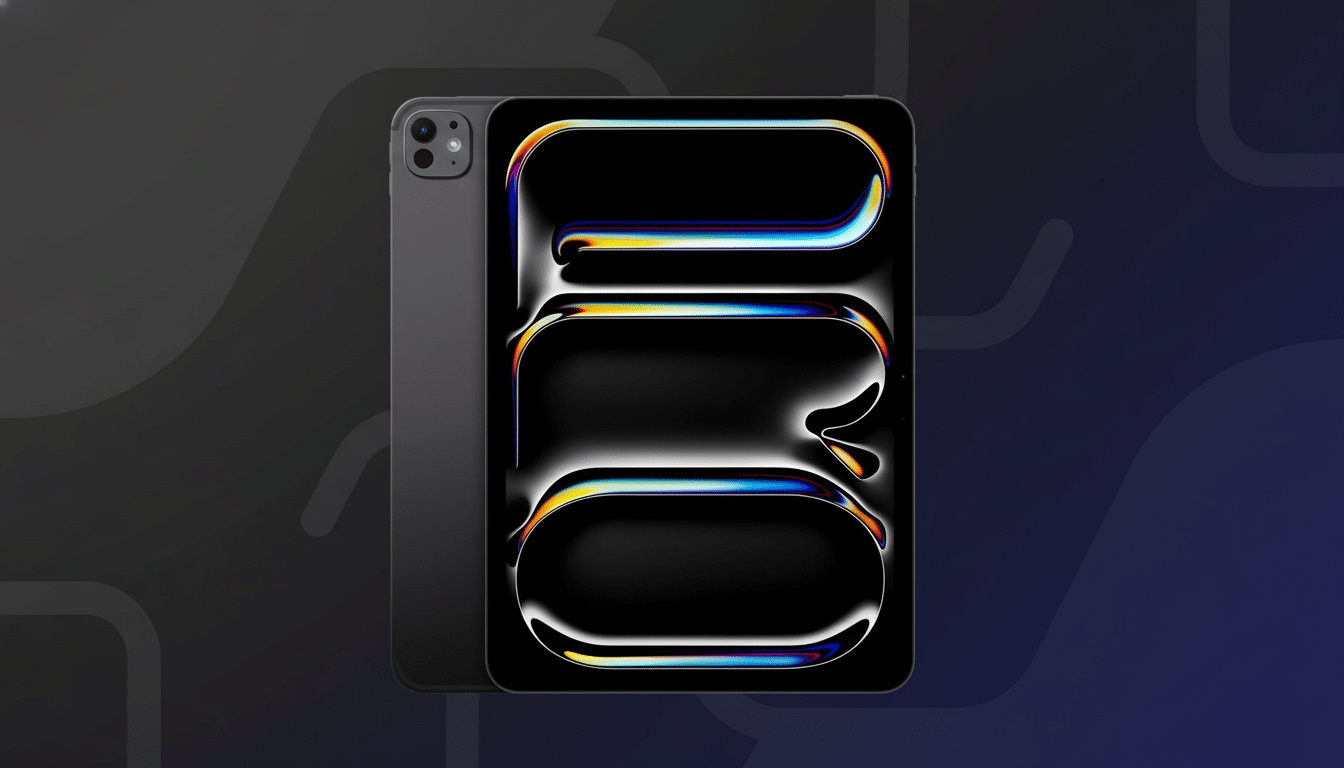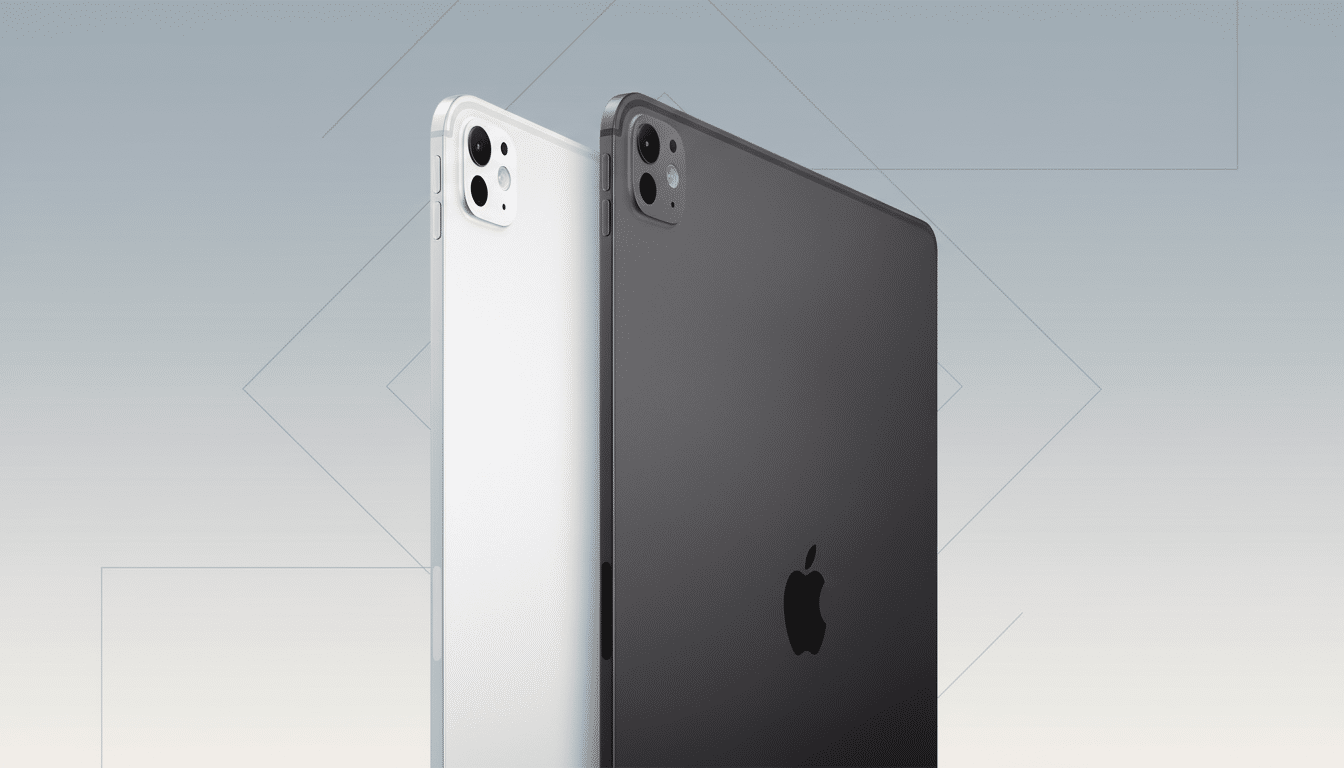Apple is bringing its entire high-end range over to the more powerful M5 system-on-chip, which covers the iPad Pro, 14‑inch MacBook Pro, and Vision Pro under one performance roof. The upgrade isn’t about more power for loading web pages but instead focuses on faster graphics, higher memory bandwidth, and a clear push into on‑device AI, where the company wants creative work and spatial computing to head next.
What the M5 Changes for Performance and AI
According to Apple, M5 doubles the peak GPU compute of M4 and includes architectural enhancements that accelerate machine learning workloads. The company is positioning it as the next big thing for Apple silicon in yet more on‑device AI, with senior hardware leadership claiming a “generational leap” developed specifically to support image generation, real‑time video effects, and multimodal models locally (as opposed to remotely in the cloud).
- What the M5 Changes for Performance and AI
- Everything That’s New With the iPad Pro, Your Next Laptop
- MacBook Pro Courts Pros With More Bandwidth
- Vision Pro Receives Polishing for Flawless Headset Experience
- Why This Matters For Apple’s AI Strategy
- Pricing and Availability Across iPad Pro, MacBook Pro, and Vision Pro

Practically speaking, that translates as snappier rendering for creative apps, lower latency with live filters and transcription, and faster processing for complicated exports. More memory bandwidth and faster storage further reduce bottlenecks that typically bog down pro workflows.
Everything That’s New With the iPad Pro, Your Next Laptop
The new iPad Pro offers up to 3.5 times faster AI performance compared with the previous generation of iPad Pro, and is also up to 5.6 times faster than the M1‑based model. Apple also increased the speed at which storage reads and writes, while fast charging should lead to about 50% in 30 minutes or so. Pricing begins at $999 for the 11‑inch, and $1,299 for the 13‑inch in black or silver.
Connectivity gets a meaningful lift. Apple’s C1X cellular modem aims to offer up to 50 percent faster data performance, while a new N1 wireless chip takes on Wi‑Fi, Bluetooth, and Thread. Thread support pushes the iPad Pro even further toward being a more competent smart‑home hub for those Matter‑capable accessories, and new iPadOS features — including better windowing, a native Preview app, and folder creation — push the tablet one step closer to merging with the laptop.
MacBook Pro Courts Pros With More Bandwidth
The most noteworthy attribute of the 14‑inch MacBook Pro with M5 is its throughput. Graphics performance is higher by 1.6x, memory bandwidth increases from 120 Gbps on M4 to 153 Gbps, and storage speeds are faster in all areas as well. Apple rates the battery life at up to 24 hours. The notebook is available now, starting at $1,599, and comes in space black or silver.
That bandwidth is as much a factor for creators as raw CPU or GPU numbers. Bigger textures and video frames remain resident in memory, 3D scenes refresh more smoothly, and on‑device models can maintain larger context windows. Look for faster timelines and better interaction with your projects, as well as things like smoother performance in multichannel audio when you are doing more inside Premiere Pro, such as multiple open projects and multiple exported formats.

Vision Pro Receives Polishing for Flawless Headset Experience
They’ve migrated Vision Pro from M2 to M5, with a 10% bump in the rendering of the display and increased support up to 120 Hz, up from 100 Hz. Apple says AI‑powered features run 50 percent faster. General‑use battery life is about 30 minutes longer, or up to 2.5 hours, and we saw over three hours for video. The headset costs $3,499 and comes with a Dual Knit Band in small, medium, and large (for the sake of fit).
The higher refresh ceiling is more than a spec bump; it reduces the sense of blur to our eye and lowers motion latency for tracking by your hand and eyes, so spatial interfaces feel more natural. Developers get headroom for richer scenes and denser UI, while users should experience fewer stutters in demanding apps. Trade reports from the likes of Bloomberg have also hinted that Apple is still looking at lighter smart glasses, and a faster Vision Pro platform will give its broader wearables strategy more substance.
Why This Matters For Apple’s AI Strategy
On‑device AI is the throughline. By raising the baseline of GPU compute and memory bandwidth across iPad, Mac, and Vision Pro, Apple thinks it can reach the point where things like semantic search in large photo libraries, background video enhancement, and context‑aware assistance all run locally. That approach is consistent with the company’s position on privacy and is also less dependent on network connectivity, a point cloud‑and‑edge providers like Akamai have made as they lay out arguments allowing enterprises to prefer not only cloud but on‑site edge processing over sending their workloads into some distant data center.
Unifying on this M‑series should also mean less fragmentation, which would be welcome news for developers. Developing a single fast path for graphics and machine learning enables apps to easily scale from tablet to laptop form factors, while maintaining feature and performance level parity. For users, that means more uniform experiences and longer‑lasting headroom as software becomes ever more AI‑heavy.
Pricing and Availability Across iPad Pro, MacBook Pro, and Vision Pro
The iPad Pro costs $999 for 11 inches and $1,299 for 13 inches in black or silver. The 14‑inch MacBook Pro pricing begins at $1,599 for space black or silver. The Vision Pro is still $3,499 with the new Dual Knit Band. Preorders start now, with shipments and in‑store units to come.

